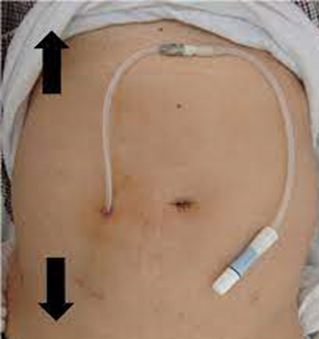A nurse is reinforcing teaching with a newly licensed nurse who is caring for a client who has AIDS. The nurse should instruct the newly licensed nurse to clean spills of the client's blood with a solution of water and which of the following cleaning agents?
Isopropyl alcohol
Bleach
Hydrogen peroxide
Chlorhexidine
The Correct Answer is B
Choice A Reason:
Isopropyl alcohol is the appropriate cleaning agent. While alcohol can be used as a disinfectant for some purposes, it might not be as effective as bleach against bloodborne pathogens like HIV. Bleach is generally recommended for disinfection in this context.
Choice B Reason:
Bleach is recommendable. Bleach is effective in disinfecting surfaces contaminated with bloodborne pathogens, including HIV. It's recommended for cleaning and disinfecting areas contaminated with blood as it can effectively kill many pathogens, including viruses like HIV. The standard recommendation is to create a solution of bleach and water to clean surfaces contaminated with blood.
Choice C Reason:
Hydrogen peroxide is not recommendable. Hydrogen peroxide has some disinfectant properties, but bleach is more effective against bloodborne pathogens like HIV when used to clean contaminated surfaces.
Choice D Reason:
Chlorhexidine is not appropriate. Chlorhexidine is an antiseptic commonly used for skin disinfection before procedures. While it's effective for certain purposes, it's not typically recommended for disinfecting surfaces contaminated with bloodborne pathogens like HIV. Bleach is the preferred agent in such cases.
Nursing Test Bank
Naxlex Comprehensive Predictor Exams
Related Questions
Correct Answer is C
Explanation
Choice A Reason:
Chill the dialysate prior to infusion. Generally, the dialysate used in peritoneal dialysis is warmed to body temperature before infusion to enhance comfort and prevent abdominal discomfort. Chilling the dialysate can cause discomfort and is not a standard practice in peritoneal dialysis.
Choice B Reason:
Monitor the client for diarrhea. While gastrointestinal symptoms might occur in some individuals undergoing peritoneal dialysis due to changes in fluid balance, diarrhea is not a typical or expected outcome. However, monitoring for any unusual gastrointestinal symptoms or changes in bowel habits is part of holistic client care.
Choice C Reason:
Weigh the client before and after the treatment. Weighing the client before and after peritoneal dialysis is a critical step to assess the effectiveness of the treatment. The difference in weight helps determine how much fluid was removed during the dialysis process, providing valuable information about the treatment's efficacy and the client's fluid status.
Choice D Reason:
Use clean gloves when handling dialysate bags. Maintaining aseptic technique during peritoneal dialysis is crucial to prevent infections. The use of clean gloves (not sterile gloves, unless otherwise specified) when handling dialysate bags helps minimize the risk of contamination, ensuring the safety of the procedure.

Correct Answer is D
Explanation
Choice A Reason:
"Having a total cholesterol level below 200 mg/dl increases my risk for a stroke." This statement is incorrect. Generally, having a total cholesterol level below 200 mg/dl is considered beneficial for heart health and reducing the risk of stroke.
Choice B Reason:
"My risk for a stroke increases if my HbA1c level is 6 percent or less." This statement is incorrect. An HbA1c level of 6 percent or less is an indicator of good blood sugar control, which usually reduces the risk of stroke. A higher HbA1c level is associated with an increased risk of complications in diabetes, including stroke.
Choice C Reason:
"My provider might prescribe a glucocorticoid regimen to decrease my risk for a stroke." - Glucocorticoids are not typically prescribed to reduce the risk of stroke in individuals with diabetes. These medications may have various uses but are not a standard preventive measure for stroke in this context.
Choice D Reason:
"I can decrease my risk for a stroke by losing excess weight." This statement is appropriate. Maintaining a healthy weight is a significant factor in reducing the risk of stroke, especially for individuals with diabetes. Weight management contributes to better control of blood pressure, cholesterol levels, and blood sugar, which collectively reduce the risk of stroke.
Whether you are a student looking to ace your exams or a practicing nurse seeking to enhance your expertise , our nursing education contents will empower you with the confidence and competence to make a difference in the lives of patients and become a respected leader in the healthcare field.
Visit Naxlex, invest in your future and unlock endless possibilities with our unparalleled nursing education contents today
Report Wrong Answer on the Current Question
Do you disagree with the answer? If yes, what is your expected answer? Explain.
Kindly be descriptive with the issue you are facing.
